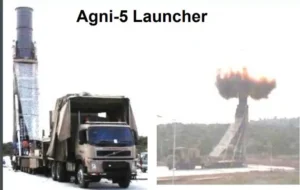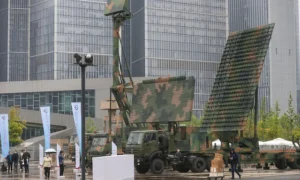There has not been a mass casualty assault in the U.S. carried out in the name of the Islamic State group since 2017, when a truck mowed down cyclists and pedestrians on a New York City bikeway, leaving eight dead.
Yet five years after the Islamic State group’s territorial defeat in Baghuz, Syria, had prompted hopes that the terrorist network was in terminal decline, a recent spate of attacks has thrust the group back into the spotlight. On the same day as the Moscow atrocity, an ISIS-K suicide bombing in Kandahar, Afghanistan, resulted in the deaths of at least 21 people.
As a terrorism expert and a scholar specializing in radical Islamist militant groups and the geographical scope of their attacks, I believe these incidents underscore the growing threat of ISIS-K both within the
region it draws support from and on an international scale.
Amplifying influence
A successful terror attack on a Western capital is certainly something ISIS-K, or Islamic State Khorasan Province, aspires to. The intent behind the group’s activities is to bolster its position among jihadist
factions by means of audacious and sophisticated attacks.
It is a strategy that showcases ISIS-K’s capabilities for spectacular operations, distinguishing it from potential rival groups. But it also enhances ISIS-K’s appeal, attracting both supporters and resources in
the shape of funding and fighters.
By establishing a unique identity in a crowded extremist landscape, ISIS-K aims to undercut its competitors’ influence and assert its dominance in the jihadist sphere of the Khorasan region it targets, including Afghanistan, Pakistan, Iran and other Central Asian countries.
ISIS-K’s ambition extends beyond territorial control, engaging in a broader contest for ideological supremacy and resource acquisition globally.
An expanding threat
This global reach and ambition are evident in ISIS-K’s recent planned operations.
These include a suicide bombing in Iran in January 2024 and thwarted attacks across Europe, notably the foiled plots in Germany and the Netherlands in July 2023.
And without a doubt, a successful attack in the United States is seen within ISIS-K’s hierarchy as a major goal.
Since the U.S. withdrew from Afghanistan in 2021, officials in the Biden administration have repeatedly warned of ISIS-K’s escalating danger to American interests, both at home and abroad.
ISIS-K’s propaganda has persistently framed the U.S. as its principal enemy – a narrative that is fueled by America’s extensive military and economic efforts to dismantle Islamic State operations since 2014.
The United States’ involvement, especially in collaboration with the Taliban — ISIS-K’s primary regional adversary — has placed America firmly in the group’s crosshairs.
Employing tactics refined during the period that the Islamic State group was most active, ISIS-K seeks to inspire lone-wolf attacks and radicalize individuals in the U.S.
The 2015 mass shooting in San Bernardino, California, which left 14 dead, and the 2016 shooting at a nightclub in Orlando, Florida, that resulted in at least 49 deaths, were both attacks inspired by the
Islamic State group.
Targeting major powers
Taking its lead from the Islamic State group, ISIS-K in 2022 publicly condemned America, calling it an enemy of Islam. Of course, ISIS-K had by then already demonstrated its intention to harm U.S. interests, notably in a 2021 Kabul airport attack in which 13 U.S. service members and 170 Afghans were killed.
ISIS-K views the U.S. in much the same way as it does Russia: both as a military and an ideological foe.
Russia became a prime target due in part to its partnering with the Bashar al-Assad government in Syria in operations against Islamic State group affiliates. Similarly, Washington has worked with the Taliban in
Afghanistan in countering ISIS-K operations.
While it is easier for ISIS-K to penetrate Russian territory, given the country’s geographical proximity to major Islamist recruitment centers, such as Tajikistan, the potential for strikes in the United States
remains significant.
In 2023, U.S. authorities investigated a group of Uzbek nationals suspected of entering the country from Mexico with the assistance of traffickers linked to the Islamic State group, underscoring the group’s
threat.
Targeting American interests serve multiple purposes for ISIS-K. By striking against the U.S., ISIS-K not only retaliates against Washington’s counterterrorism efforts but also aims to deter U.S. involvement in regions of interest to ISIS-K.
It also taps into historical grievances against the U.S. and Western interventions in Muslim countries – from the invasions of Afghanistan and Iraq to the stationing of U.S. troops in significant Islamic centers
in the Middle East, notably Saudi Arabia.
Countering a persistent threat
In response to the growing threat of Islamic State group affiliates, the United States has adopted a comprehensive strategy combining military, intelligence and law enforcement efforts.
Military operations have targeted ISIS-K leaders and infrastructure in Afghanistan, while security cooperation with regional and international partners such as Uzbekistan continues to monitor and counter the group’s activities.
On the home front, law enforcement and homeland security agencies remain vigilant, working to identify and thwart potential ISIS-K plots.
But as many experts had warned, the U.S. withdrawal from Afghanistan in 2021 has posed new challenges, inadvertently transforming that country once again into a safe haven and operational base for terrorist groups. This retreat has also resulted in a significant loss of on-the-ground intelligence amid doubts over the efficacy of relying on the Taliban for counterterrorism operations.
Meanwhile, the Taliban are struggling to prevent or counteract ISIS-K attacks within their own borders.
The successful ISIS-K plots against Iran and Russia also reveal another vulnerability: When a country is distracted or preoccupied with other security concerns or conflicts, it can potentially compromise the
effectiveness of its counterterrorism efforts.
Recent years have witnessed a decrease in high-profile attacks by groups like the Islamic State, leading many to conclude that the threat was waning. As a result, global attention — and with it, intelligence and
security resources — has shifted toward escalating power rivalries and conflicts across the Pacific, Eastern Europe and the Middle East.
Yet, this shift risks underestimating the enduring threat terrorist groups pose, laying bare the dangers of complacency.
The Moscow attack emphasizes ISIS-K’s resolve to expand its influence, raising concerns about the potential threat to Western nations, including the United States. Considering ISIS-K’s track record and clear
aspirations, it would be naive to dismiss the possibility of an attack on American soil.








